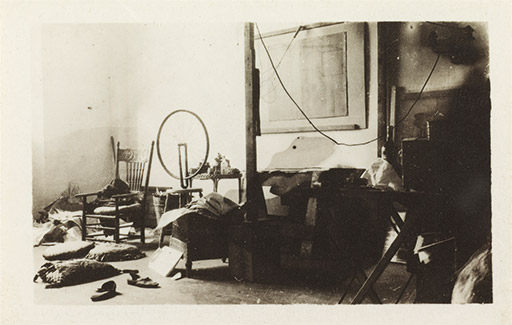Responses to the modern world
Marcel Duchamp (1887–1968), who is now seen as one of the most important artists of the twentieth century, occupies an important place in this alternative story. Duchamp started out as a Cubist, but broke with the idea of art as a matter of special visual experience and turned his attention to puns and perceptual or conceptual conundrums (Duchamp, 1975). These activities brought him into the orbit of Dada in Paris and New York, but this was probably nothing more than a convenient alliance. Duchamp played games with words and investigated the associations of ordinary objects. He also messed around with gender conventions, inventing a female alter ego called Rrose Sélavy – a pun on ‘Eros, c’est la vie’ or ‘Eros is life’. Critics and other artists have particularly focused on the strain of his work known as the ‘readymades’. From 1914, Duchamp began singling out ordinary objects, such as a bottle rack, for his own attention and amusement and that of a few friends. Sometimes he altered these things in some small way, adding words and a title or joining them with something else in a way that shifted their meaning; with Bicycle Wheel, he attached an inverted bike wheel to a wooden stool – he seems to have been particularly interested in the shadow play this object created. We can see this odd object among the clutter of Duchamp’s studio on West 67th Street in the photograph by Henri-Pierre Roche (Figure 24). He called these altered everyday things ‘assisted readymades’.

Duchamp was interested in interrogating the mass-produced objects created by his society and the common-sense definitions and values that such things accrued. Mischievously, he probed the definitions and values of his culture for a small group of like-minded friends. It isn’t at all clear that any of this was meant to be art; in fact, he explicitly posed the idea of making ‘works’ that could not be thought of as ‘art’ (Nesbit, 2000). Nevertheless, artists in the late 1950s and the 1960s became fascinated with this legacy and began to think of art as something the artist selected or posited, rather than something he or she composed or made. According to this idea, the artist could designate anything as art; what was important was the way that this decision allowed things to be perceived in a new light. This was to lead to a fundamentally different conception of art practice.
With the break-up of the hegemony of the New York School, artists began to look at those features of modern art that had been left out of the formalist story. During this period, Duchamp came to replace Picasso or Matisse as the touchstone for young artists, but he was just one tributary of what became a torrent. Perhaps most significantly, painting and anything we might straightforwardly recognise as sculpture began to take a back seat. A host of experimental forms and new media came to prominence: performance art, video, works made directly in or out of the landscape, installations, photography and a host of other forms and practices. These works often engaged with the representation of modernity and the shifting pattern of world power relations we call ‘globalisation’.
